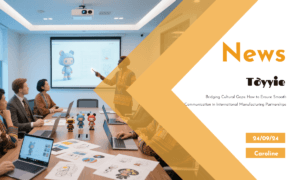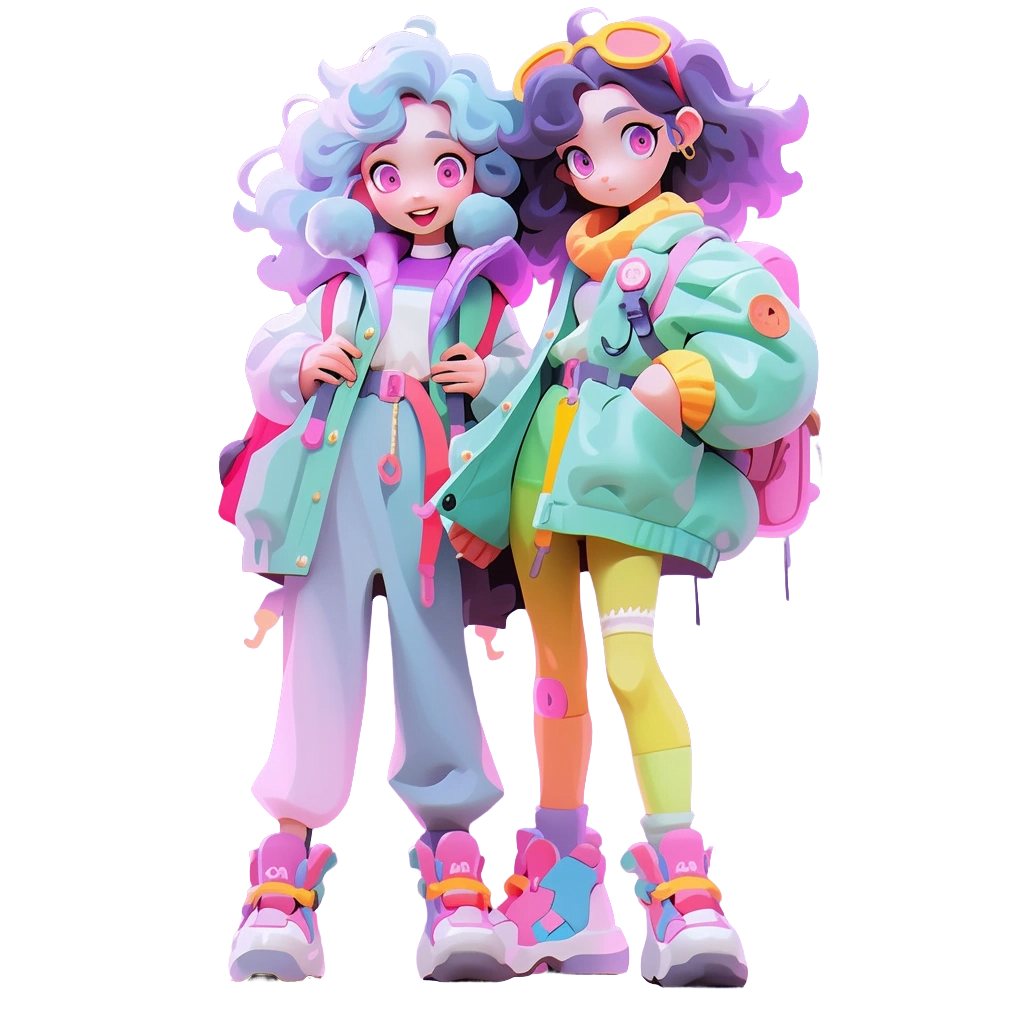📌 Introduction📌
As a toy designer, there’s nothing more fulfilling than seeing your innovative ideas come to life. The process of translating a unique concept from paper to a tangible product is both exhilarating and nerve-wracking. But as many of us know all too well, the journey from design to production is fraught with challenges. One of the most common—and most frustrating—challenges is seeing your innovative design get simplified or compromised during manufacturing.
I’ve spent decades in this industry, and I’ve seen it happen countless times: a brilliant, original idea is watered down during production, losing the very elements that made it special. It’s a tough pill to swallow, especially when you’ve poured your heart and soul into a design. But I’m here to tell you that it doesn’t have to be this way. With careful planning, clear communication, and a bit of tenacity, you can protect your design’s integrity from the production process.
Understanding Why Designs Get Compromised 🤔
Before we dive into the strategies to protect your design, it’s important to understand why compromises happen in the first place. Often, these compromises are not due to malice or incompetence, but rather a result of the inherent challenges in the manufacturing process. Here are some common reasons:
Cost Constraints
Technical Limitations 🛠️:Manufacturing processes have limitations, and sometimes your design might be too complex to be produced exactly as envisioned. This could involve issues like intricate details being too small to mold, or the desired materials not being suitable for mass production.
Time Pressures ⏰:In the fast-paced world of toy production, deadlines are tight. There can be pressure to simplify designs to speed up the production process, especially if delays occur at earlier stages.
Communication Gaps 🗣️:Miscommunication or misunderstandings between designers and manufacturers can lead to unexpected changes. If the manufacturer doesn’t fully grasp the importance of certain design elements, they may unintentionally alter or omit them during production.
Setting Clear Priorities from the Start 🎯
To avoid these pitfalls, the first step is setting clear priorities and expectations right from the beginning. When you start working with your manufacturing partner, make it clear which aspects of your design are non-negotiable. These are the elements that define your product and make it unique.
1. Identify Your Non-Negotiables 🚫
Start by identifying the core features of your design that cannot be compromised. These could be specific materials, unique shapes, or intricate details that are central to your product’s identity. Make sure your manufacturer understands why these elements are critical to the final product.
2. Be Transparent About Your Vision 🌟
Share the story behind your design. When your manufacturer understands the thought process and purpose behind each element, they’re more likely to appreciate its importance. Don’t be afraid to get personal—explain the inspiration, the target audience, and the value each detail adds.
3. Prioritize Communication 🗨️
From the outset, establish open lines of communication with your manufacturing partner. Regular check-ins, detailed documentation, and clear visual references can help ensure everyone is on the same page. If possible, meet in person or virtually to discuss the project in depth. The more your manufacturer understands your vision, the better equipped they’ll be to bring it to life.
Collaborating with Your Manufacturer 🤝
One of the most effective ways to protect your design is to see your manufacturer as a collaborator rather than just a service provider. By fostering a collaborative relationship, you can work together to overcome challenges without compromising on quality.
1. Involve Them Early ⏳
Get your manufacturer involved in the design process as early as possible. Their technical expertise can help you identify potential production issues before they become problems. This collaborative approach allows you to adjust your design in ways that maintain its integrity while also ensuring it’s feasible to produce.
2. Ask for Input 💡
Don’t be afraid to ask your manufacturer for their input on how to achieve your design goals. They may have alternative suggestions for materials or processes that can achieve the same effect at a lower cost or with fewer technical challenges. Being open to their suggestions can lead to innovative solutions that preserve your design.
3. Prototype Wisely 🛠️
Prototyping is a crucial step in the process, but it’s also where many compromises begin to happen. Ensure that your prototypes are as close to the final product as possible. This might mean investing in high-quality, detailed prototypes that accurately reflect the materials and processes you intend to use in mass production.
4. Negotiate, Don’t Settle ⚖️
If your manufacturer suggests changes that could compromise your design, don’t be afraid to negotiate. Ask them to explain why the change is necessary and explore alternatives that don’t sacrifice your vision. Sometimes, a small adjustment in another area can offset the need for a larger compromise.
Leveraging Technology to Preserve Design Integrity 💻
Today’s technology offers powerful tools to help designers maintain the integrity of their creations throughout the production process. By leveraging these tools, you can ensure that your design remains as close to the original as possible.
1. 3D Modeling and Printing 🖨️
3D modeling allows you to create highly detailed virtual prototypes that can be shared with your manufacturer. This technology makes it easier to visualize complex designs and catch potential issues before they arise. 3D printing can also be used to create physical prototypes that closely match the final product, providing a tangible reference for both you and the manufacturer.
2. Digital Collaboration Tools 🌐
Use digital platforms that allow for real-time collaboration and feedback. Tools like CAD software with cloud-based sharing capabilities enable you and your manufacturer to work on the design simultaneously, reducing the chances of miscommunication and ensuring that changes are made with your approval.
3. Quality Control via Technology 🔍
Implement quality control measures that leverage technology, such as automated inspections or digital measurement tools. These tools can help ensure that every piece produced meets the exact specifications of your design, minimizing the risk of deviations during mass production.
Standing Firm on Your Vision 💪
There will be times when you need to stand firm on your vision, even if it means pushing back against cost-cutting measures or production shortcuts. This isn’t always easy, especially when you’re under pressure to deliver on time and within budget. However, protecting the integrity of your design is crucial for creating a product that truly stands out.
1. Advocate for Your Design 🗣️
Be your design’s strongest advocate. If you believe that a particular element is essential to the product’s success, make your case. Use data, market research, or past successes to back up your claims. Show your manufacturer why sticking to the original design is worth the extra effort or cost.
2. Know When to Compromise ⚖️
While it’s important to stand firm, it’s also important to recognize when a compromise is necessary. Not every detail is worth fighting for, and sometimes a small change can lead to a better overall product. The key is knowing which battles to pick and making informed decisions about where to make concessions.
3. Document Every Decision 📝
Keep detailed records of every design decision, including any changes that are made along the way. This documentation will be invaluable if you need to revisit decisions or defend your choices later in the process. It also provides a clear trail of how the design evolved, which can be useful for future projects.
Reflecting on the Outcome 🤔
Once your product is complete, take the time to reflect on the outcome. Did your design make it through the production process intact? If not, what compromises were made, and were they worth it? Use these reflections to inform your future projects, helping you to better protect your designs moving forward.
1. Post-Production Review 🕵️
Conduct a thorough review of the final product compared to the original design. Identify any discrepancies and analyze how they occurred. This review can help you understand where the process broke down and how to prevent similar issues in the future.
2. Gather Feedback 🗣️
Collect feedback from customers, colleagues, and even your manufacturer about the final product. This feedback can provide valuable insights into whether the compromises made during production impacted the product’s performance or reception.
3. Continuous Improvement 🔄
Use the lessons learned from each project to improve your processes. Whether it’s refining your communication strategies, enhancing your use of technology, or better managing production timelines, there’s always room for growth. By continuously improving, you’ll be better equipped to protect your designs in future projects.
Final Thoughts 🌟
Ensuring that your innovative design doesn’t get compromised during production is a challenge, but it’s one that can be met with the right strategies and mindset. By setting clear priorities, collaborating closely with your manufacturer, leveraging technology, and standing firm on your vision, you can bring your designs to life without sacrificing their integrity.
Remember, as a designer, your creativity is your most valuable asset. Protecting your designs not only preserves your artistic vision but also sets you apart in a competitive market. By taking the steps to ensure your designs are faithfully translated into final products, you’re not just creating toys—you’re creating experiences, memories, and moments of joy that resonate with your audience.







